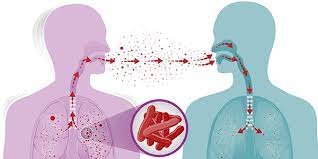Diwali is an integral part of India’s rich tradition and a festival that embodies joy and happiness. Known as the Festival of Lights, Diwali is celebrated with great enthusiasm across India. However, in recent times, the pattern of celebration has changed somewhat and has become associated with excessive bursting of crackers, which contributes significantly to air and noise pollution. As a result, there has been a significant impact on the environment and health of the people. Air pollution is a serious health issue in the country especially in the northern parts during winter seasons. The air pollution in the northern region is attributed to dust, burning of crops in certain states, burning of garbage construction and prevailing climatic conditions.
This air pollution has serious impacts on the health of children, aged people and people suffering from respiratory ailments. Diwali, which is a festival of lights, falls during the same period. As a matter of practice people have been celebrating Diwali by bursting crackers. Crackers contain combustible chemicals that include potassium chlorate powdered aluminum, magnesium, salts of barium, copper, sodium, lithium, strontium etc. and emit smoke on combustion of these chemicals along with sound. This smoke and sound has health impacts on children, aged people and also animals and birds. Apart from these compounds a large amount of waste is also generated after bursting crackers.
Airborne pollution has been rising above safe limits during winter in many cities. The excessive burning of crackers during Diwali aggravates the problem. For instance, the pollution levels in Delhi, especially post Diwali, reached such levels that the government had to declare an emergency situation, which had socio-economic consequences like closing down of schools, construction sites and power stations. Several studies have highlighted the health risks posed by firecrackers across India. The chemicals released during firecracker combustion, such as sulfur, zinc, copper, and sodium, can severely damage heart and brain health. Furthermore, these harmful substances can lead to significant lung damage and respiratory issues. Many people are at risk of heart attack, among them, elderly people and people with risk factors for heart disease or stroke.
It is advisable that those who still wish to celebrate Diwali with fireworks, should consider opting for “green” firecrackers that produce less pollution. More importantly, they can embrace traditional Diwali celebrations by lighting oil lamps and gifting plants to friends and family, thereby minimising environmental damage. This Diwali, it is essential to prioritise our health and the well-being of our loved ones. While it’s a time for joy and celebration, being mindful of the environmental and health impacts of firecrackers can lead to a safer and more enjoyable festival. By choosing eco-friendly alternatives and celebrating responsibly, we can ensure that Diwali remains a time of joy without compromising our health or the environment.

























